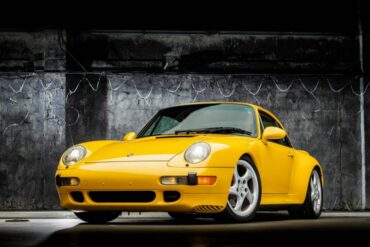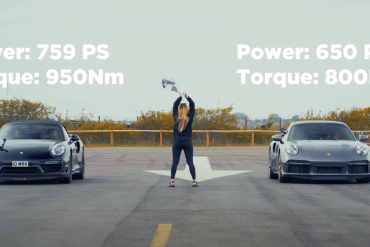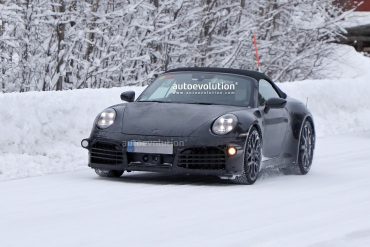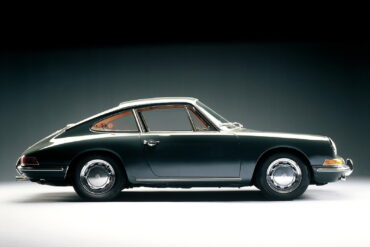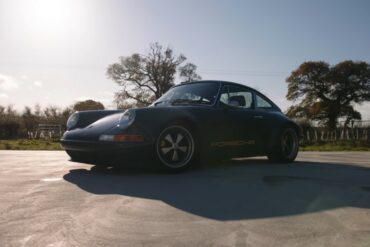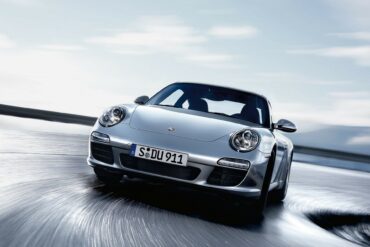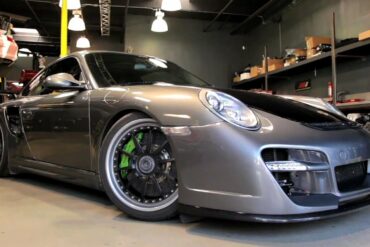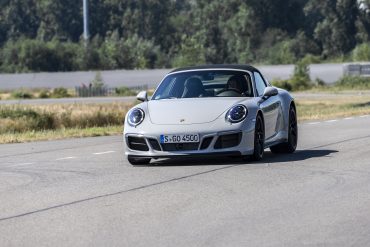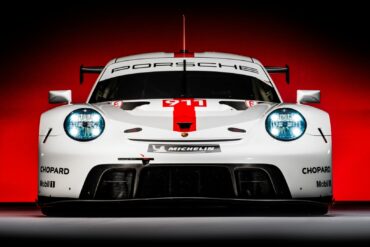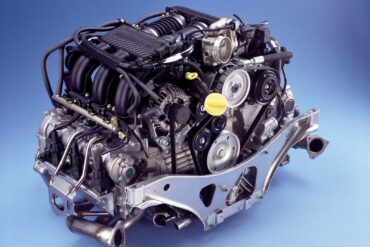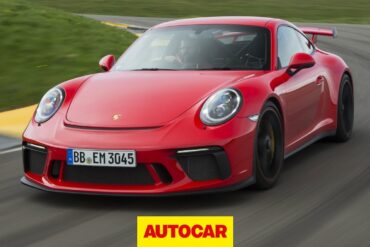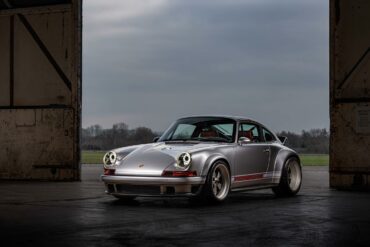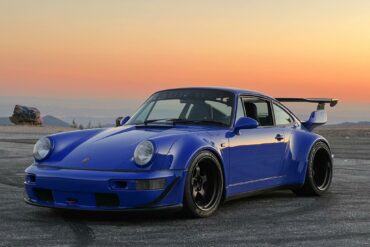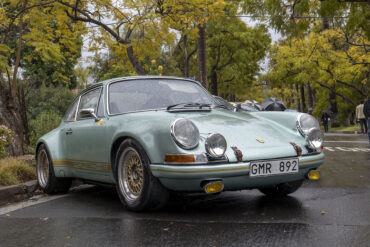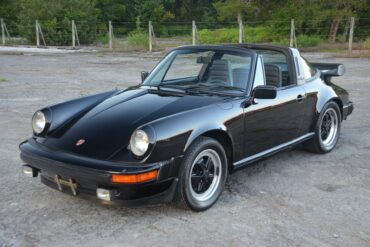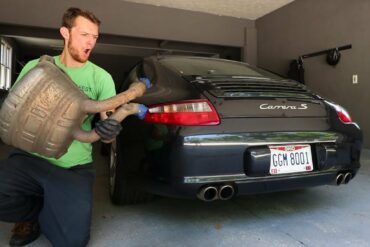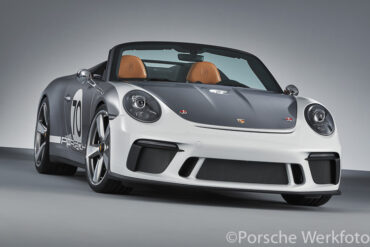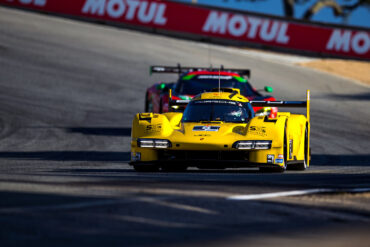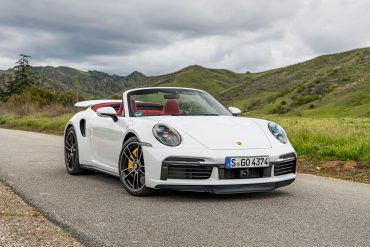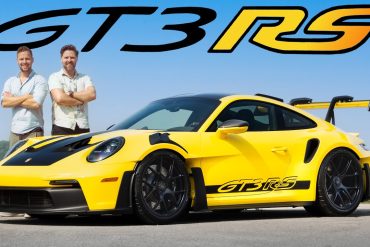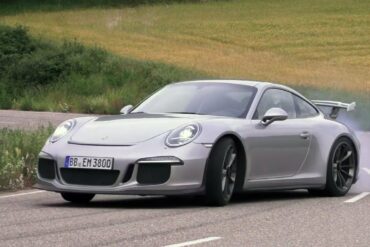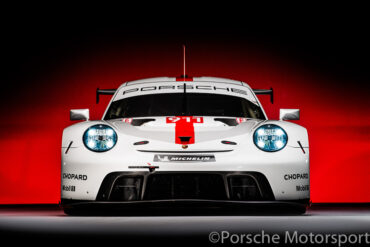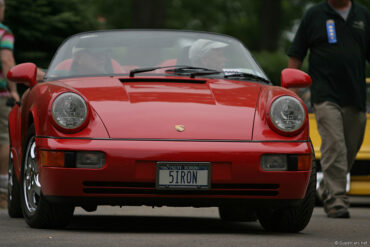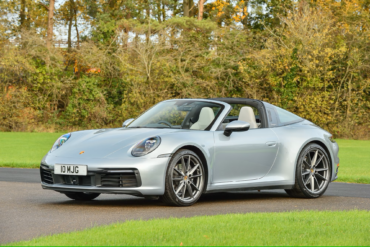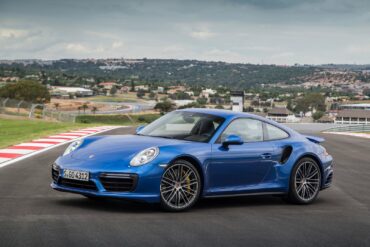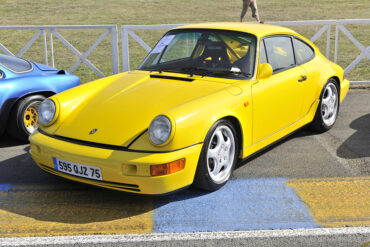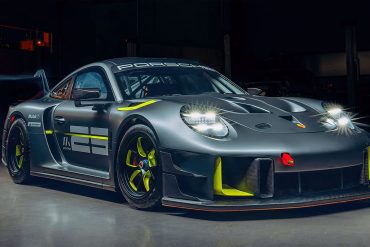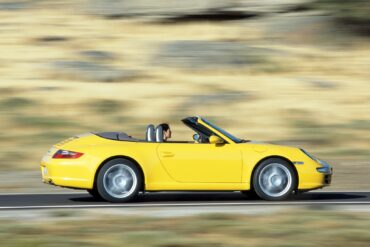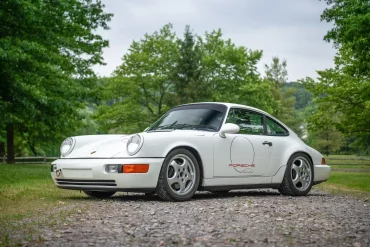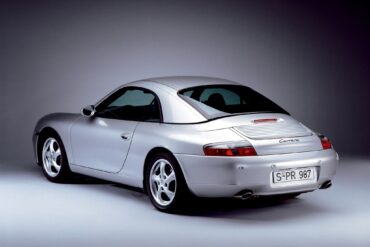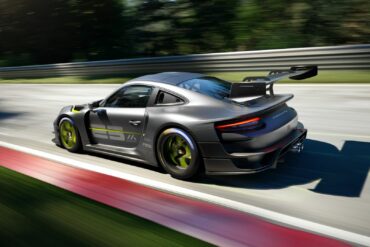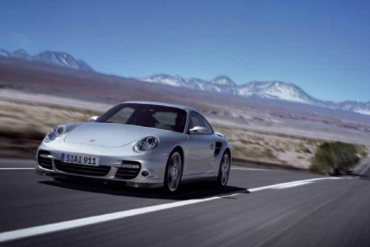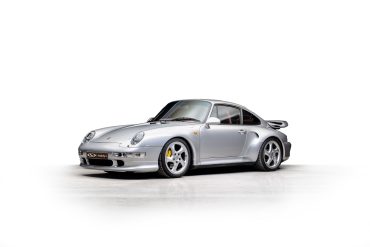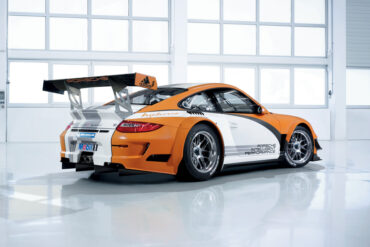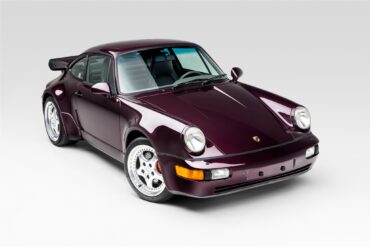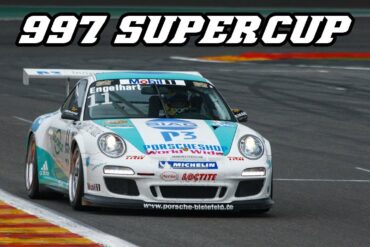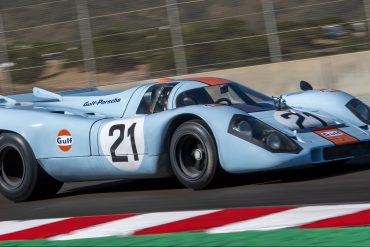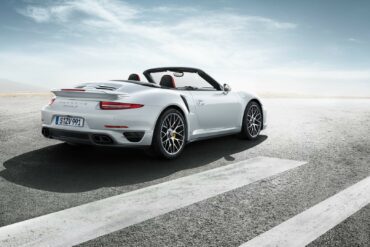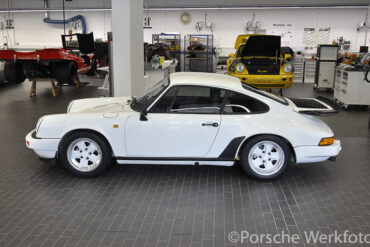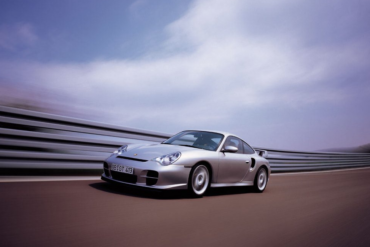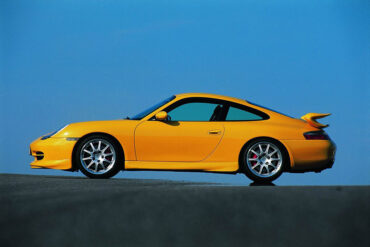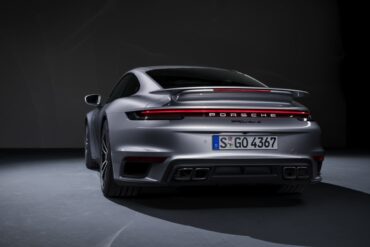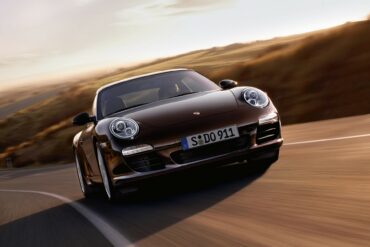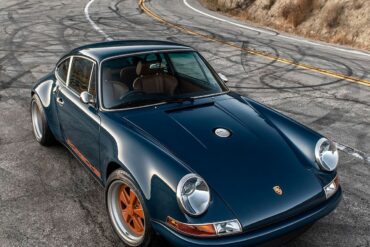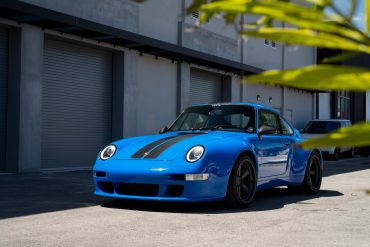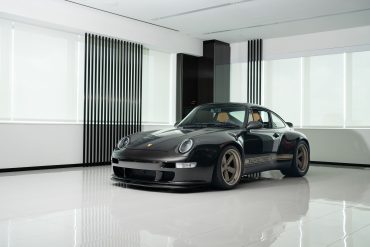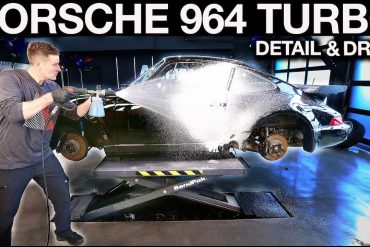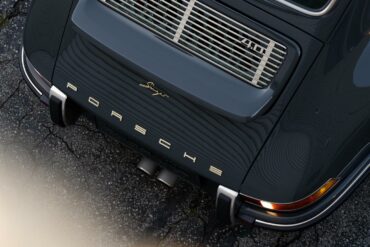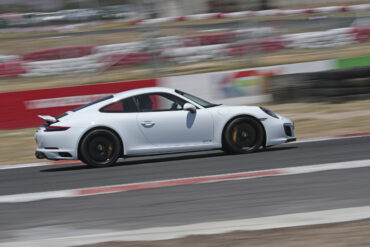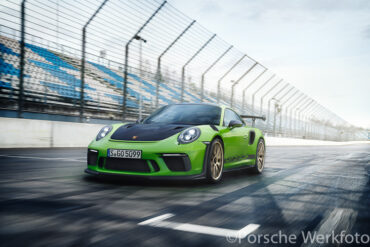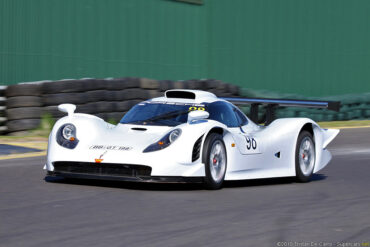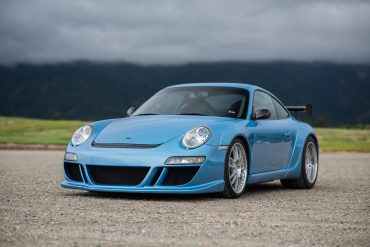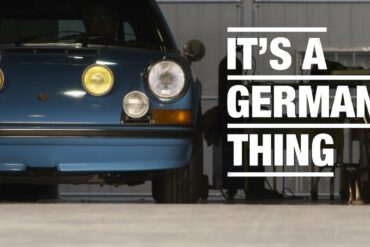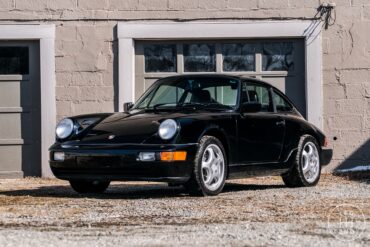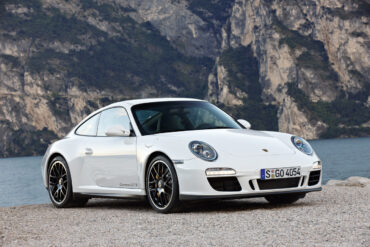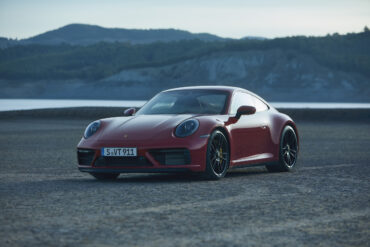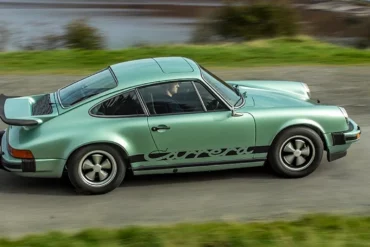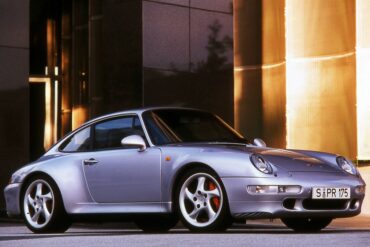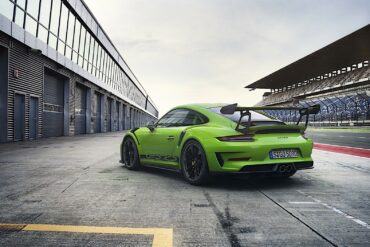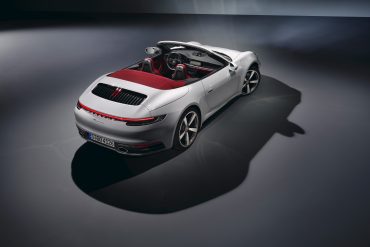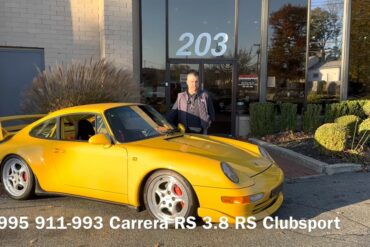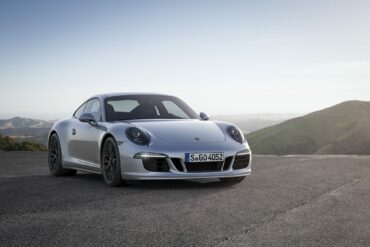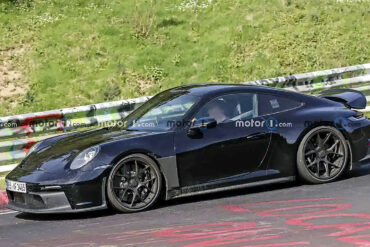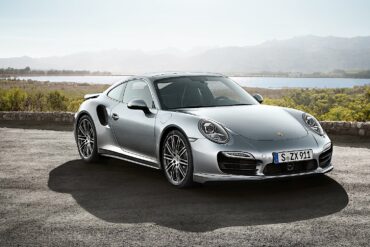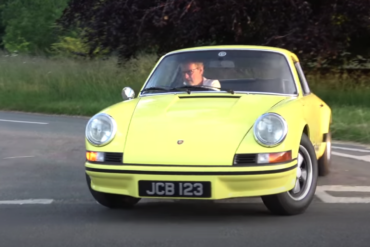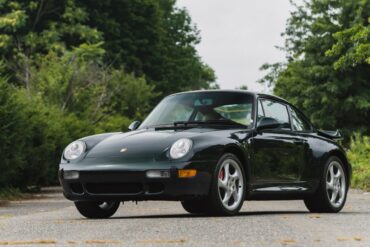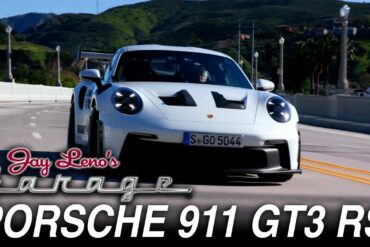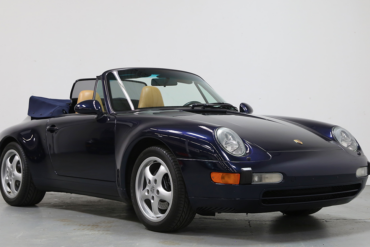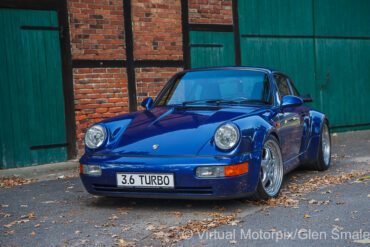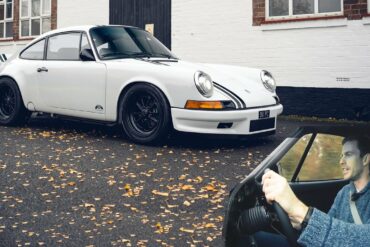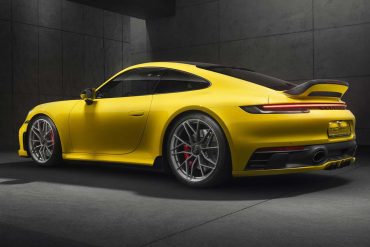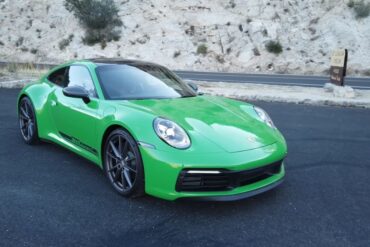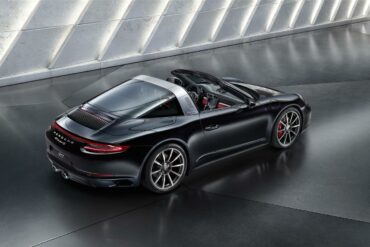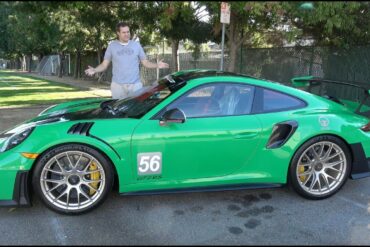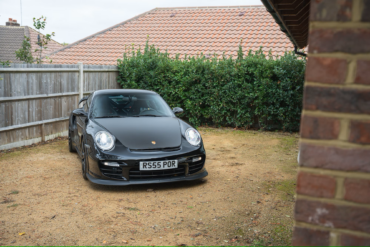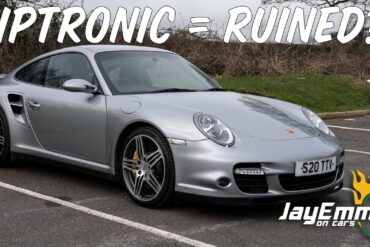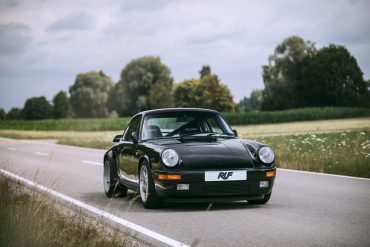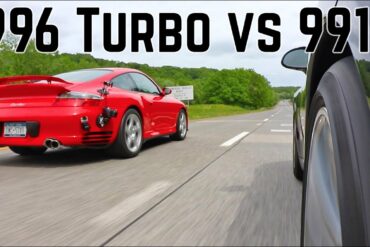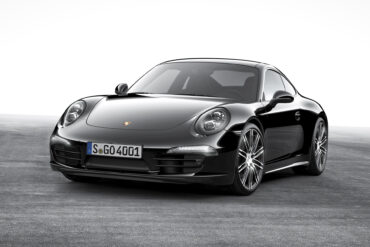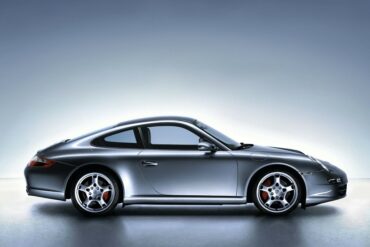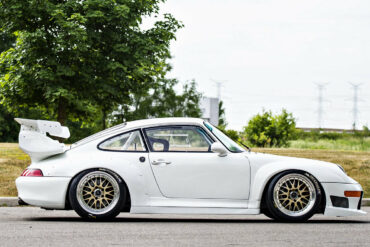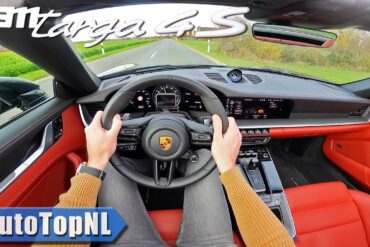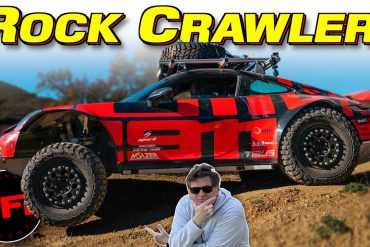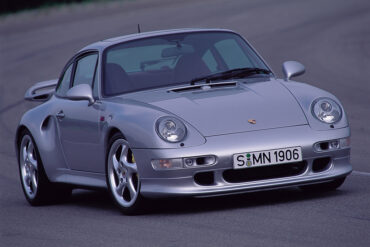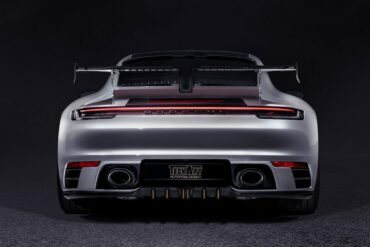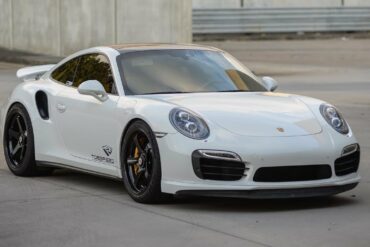An Original Owner Car The Porsche 911 Carrera 4S coupe is a much-loved car by so many folks, and if...
Porsche 911
All
- Porsche 912
- 911 Carrera RS 2.7
- Porsche 901 (911)
- Porsche 911 (F-Series)
- Porsche 911 (991)
- Porsche 911 (G-Series)
- Porsche 911 (964)
- Porsche 911 (993)
- Porsche 911 (996)
- Porsche 911 (997)
- 911 Speedster Concept
- Porsche 911 (992)
- 964 Carrera 2
- 964 Carrera 4
- ’30 Jahre’ Anniversary
- 964 Speedster
- 964 Turbo
- 964 Carrera RS
- 964 Carrera Cup
- 964 RSR
- 993 Carrera
- 993 Carrera 4
- 911 Edition 50
- 993 Carrera 4S
- 911 2.0 Bertone Roadster
- 993 Carrera S
- 993 Targa
- 992 Sport Classic
- 993 Turbo
- 996 Carrera
- 993 Carrera RS
- 992 America Edition 911
- 996 Carrera 4
- 993 GT2
- 996 Targa
- 993 Carrera Cup
- 996 Carrera 4S
- 996 Turbo
- 996 Turbo S
- 996 GT3
- 996 GT3 RS
- 996 GT2
- 996 GT3 Cup
- 996 GT3 R
- 996 GT3 RSR
- 997 Carrera
- 996 GT3 RS Race
- 997 Carrera S
- 997 Carrera 4
- 997 Carrera 4S
- 997 Targa
- 911 Carrera 3.0 Coupe (G-Series)
- 997 Targa 4S
- 997 Turbo
- 997 Turbo S
- 997 GT2
- 992 Carrera T
- 997 GT2 RS
- 997 Speedster
- 997 Carrera GTS
- 992 Dakar
- 997 Carrera 4 GTS
- 997 GT3 Cup
- 997 GT3 R
- 997 GT3 RSR
- 997 GT3
- 997 GT3 RS
- 997 GT3 R Hybrid
- 991 Carrera
- 991 Carrera 4
- 991 Carrera S
- 991 Carrera 4S
- 991 Targa 4
- 991 Targa 4S
- 991 Turbo
- 991 Turbo S
- 991 Carrera GTS
- 991 Carrera 4 GTS
- 991 Targa 4 GTS
- 991 911 R
- Porsche 992 GT2 RS
- 991 GT3
- 991 GT3 RS
- 991 GT2 RS
- 991 Speedster
- 991 GT3 R
- 991 GT3 Cup
- 991 RSR
- 991 Carrera T
- 992 Carrera 2
- 992 Carrera 4
- 992 Carrera S
- 992 Carrera 4S
- 992 Targa 4
- 992 RSR
- 992 Targa 4S
- 992 Carrera GTS
- 992 Carrera 4 GTS
- 992 Targa 4 GTS
- 992 Turbo
- 992 GT3 R
- 992 Turbo S
- 992 GT3
- 992 GT3 Touring
- 992 911 S/T
- 911 (G-Series)
- 992 GT3 RS
- 992 GT2 RS
- 992 GT3 Cup
- 911 Carrera 3.0 (G-Series)
- 911 S (G-Series)
- 911 Carrera RSR 2.8
- 911 SC (G-Series)
- Porsche 992 GT3 R Rennsport
- 911 S/T
- 911 Carrera 3.2 (G-Series)
- 911 (Base Model)
- 911 Turbo (930)
- 911 SC Safari
- 911 L
- 911 Carrera RSR Turbo 2.1
- 911 T
- 911 Carrera RSR 3.0
- 911 E
- 911 S
- 911 SC San Remo
- 911 Carrera 3.2 Clubsport
- 911 R
- Porsche 953
- 911 Carrera RS 3.0
- 911 T/R
- 911 Carrera 25th Anniversary
- 911 SC RS
- 911 Turbo LE
- 911 Carrera Commemorative
- 911 Carrera 2.7 (G-Series)
- 911 3.2 Speedster
- 911 Turbo 2.7
- 964 Turbo S
In today’s video we watch a 992 Turbo S up against a tuned 991.2 Turbo S....
Car spotters have sighted what appears to be a facelifted Porsche 911 (992 generation) cabriolet. The sports car was out...
Porsche 911 (1963 – 1973) Story & History F-Body – The 1st Generation Porsche 911 Premiere: 1963 September 12 at...
Singer Vehicle Design – Tatooine Commission Today, we take a closer look at the Singer Vehicle Designs Tatooine Commission. Like...
Alex Kersten goes behind the wheel of the 1 of 1 Theon BEL001, a restomod Porsche 911 (964) for a...
2012 Porsche 911 Carrera (997.2) Technical Specifications Engine Type Flat 6 Induction Normally-aspirated Cooling Water-cooled Valvetrain Double overhead camshafts Injection Direct...
The Porsche 911 GT2, primarily built for racing but still road-legal, has a lineage tracing back to the iconic 1973...
Tuned Porsche 997 Turbo S Review TUNED visits BBi Autosport in Huntington Beach, CA to drive their new Porsche 997...
2017 Porsche 911 Targa 4 GTS (991.2) Technical Specifications Engine Engine layout Rear Engine Engine type Boxer, twin-turbo Cylinders 6 Valves...
(2019-2021) Porsche 911 RSR (991.2) Technical Specifications Technical data Porsche 911 RSR model year 2019 Engine Water-cooled six cylinder boxer...
Porsche 911 (997) Engine Codes In 2005, Porsche went from the 996 generation of the 911 to the 997 generation....
Hardcore new GT3 Tested by Autocar The Porsche 911 GT3 is back. The revised 991.2 GT3 is a stripped-out, track-ready,...
Singer Vehicle Design – Racer X Today, we take a closer look at the Singer Vehicle Designs “Racer X”. This...
This one-of-a-kind RWB build boasts custom hand-fitted bodywork, including modified bumpers, rocker panels, bolt-on fenders, a GT2-style rear wing, a...
The classic Porsche “Faithful” did not waiver Not since 1989 did Los Angeles have an official “Blizzard Warning” issued by...
To provide customers with support in developing their ideas for their own personal dream car, Porsche Exclusive Manufaktur has configured...
Porsche Option Codes – Porsche 911 (1983 Model Year) Looking to decode your 1983 Porsche 911 option codes? Want to...
I Straight Piped My Porsche 911 and It Sounds Insane The time has come to unleash the true beauty that...
Born on 8 June 1948, the Porsche 356 No.1 was presented to the world, immediately setting standards by which the...
More podiums for Porsche on the West coast swing Porsche Newsroom: Porsche Penske Motorsport has achieved another podium result in...
2023 Porsche 911 Turbo Cabriolet (992) Technical Specifications Model 911 Turbo Cabriolet Engine layout Rear Engine Design and cylinders Twin-turbocharged...
Just one look at the 2023 Porsche 911 GT3 RS and you can definitely say that this is a car...
Chris Harris Spanks the New 991 GT3 If we were a car magazine we’d call this a WORLD EXCLUSIVE, but...
The new Porsche 911 RSR (2019) What better way to introduce a new race car model, than to do so...
The 964 based Speedster was the 1994 Speedster which was based on the 964 Carrera 2 platform. There are far fewer 1994 911 Speedsters in the world than the 1989 model, with production reportedly totaled only around 936 units, less than half as many as the 1989 example. Whereas the 1989 Speedster was primarily an aesthetic package, the 964 version sought a happy medium between the regular Carrera 2 and the hardcore Carrera RS. It had the same engine as the base Carrera and didn’t have the same suspension bits as the RS.
Collecting Cars is currently offering an elegant and low mileage example of a 2021 Porsche 911 (992) Targa 4. The...
Porsche 997 GT2 RS versus 991 GT2 RS Porsche’s 991 GT2 RS remains the most powerful and fastest 911 ever...
2017 Porsche 911 Turbo S: The New Benchmark For Speed – Carfection The latest Turbo S is the fastest accelerating...
For race teams and track day customers Porsche prepared a small number of the 964 Cup cars according to the FIA NG-T regulations. Officially called the Competition model, these custom-ordered cars were an intermediary step between the Carrera Cup option (M001) and the standard tourer (M002). This M0003 option was available directly from Porsche as a road-going model. These cars had almost all the Carrera Cup modifications including the new suspension. This lowered the car by 40mm in the rear and 50mm in the front. It also included fitting of the larger 930 Turbo disc brakes and adjustable anti-roll bars.
Time has shown us that Porsche is very conservative regarding partnering with outside firms. So, who they chose to collaborate...
2005 Porsche 911 Carrera Cabriolet (997) Technical Specifications Engine Type Flat 6 Induction Normally-aspirated Cooling Water-cooled Valvetrain Double overhead camshafts...
Manufactured by Porsche Motorsport for use in their U.S. customer racing series, the Porsche 964 Carrera Cup vehicles originated from...
2001 Porsche 911 Carrera Cabriolet (996) Technical Specifications Engine Type Flat 6 Induction Normally-aspirated Cooling Water-cooled Valvetrain Double overhead camshafts...
2021 Porsche 911 GT2 RS Clubsport 25 (991.2) Technical Specifications What drives us? The next victory. Even after 25 years,...
Porsche 911 Sales Brochures (Type 997) We found quite a few Porsche sales brochures for the Type 997 911 generation....
In a stunning display of automotive prowess, Romain Dumas has shattered world records by ascending to an unprecedented altitude of...
In 1997, Porsche produced a limited factory-production run of what is the last air-cooled 911 Turbo, the 993 Turbo S....
This very special car has been hand-crafted by KAMM engineers using an original short-wheelbase 1966 Porsche sourced from the USA....
During the Geneva Motor Show, a Porsche 911 GT3 R with innovative hybrid drive is making its debut. The innovative hybrid technology featured in the car has been developed especially for racing, standing out significantly in its configuration and components from conventional hybrid systems. In this case, electrical front axle drive with two electric motors developing 60 kW each supplements the 480-bhp four-litre flat-six at the rear of the 911 GT3 R Hybrid. Instead of batteries, an electrical flywheel power generator delivers energy to the electric motors.
This 1994 Porsche 911 belongs to a limited production run of around 1,500 Turbo 3.6 models manufactured during the 1993...
Sights & Sounds of the 997 GT3 Supercup Cars...
Having just experienced the seventh Rennsport Reunion at Weathertech Raceway, Laguna Seca, it’s clear absolutely nothing would get in the...
2014 Porsche 911 Turbo S Cabriolet (991) Technical Specifications Engine layout Rear Engine Engine type Twin Turbo Boxer w/ VTG Cylinders...
Porsche 911 Carrera 3.2 Clubsport (1985) in the Museum workshop As I’ve explained on the few occasions I’ve burst into...
2001 Porsche 911 GT2 (996) Technical Specifications Engine Type Flat 6 Induction Twin-turbocharged Cooling Water-cooled Valvetrain Double overhead camshafts Injection...
The GT3 was based on the standard 996 Carrera, but was stripped of a great deal of equipment for weight savings, featuring stiffer, adjustable suspension and upgraded brakes. The GT3 used the bodyshell of the four-wheel-drive Carrera 4, which incorporated additional front-end stiffening. It featured a naturally aspirated 3.6-litre flat-six engine generating a maximum power output of 360 bhp @ 7200 rpm and torque of 273 ft lbs @ 5000 rpm. This engine was shared with the 996 Turbo and was a derivative of the engine developed for the 911 GT1 race car.
Porsche Option Codes – Porsche 911 (2021 Model Year) Looking to decode your 2021 Porsche 911 option codes? Want to...
2012 Porsche 911 Carrera S Coupe (997.2) Technical Specifications Engine Type Flat 6 Induction Normally-aspirated Cooling Water-cooled Valvetrain Double overhead camshafts...
Singer Vehicle Design – Silverstone Commission Today, we take a closer look at the Singer Vehicle Designs Silverstone Commission. The...
Turn Left or go home At 15:00, on a bitterly cold afternoon in December 2023, Porsche werks driver Romain Dumas...
While many have modified the 911 over time, Gunther Werks stands apart, envisioning a scenario where Porsche continued refining the...
The 993-generation 1997 Porsche 911 Remastered by Gunther Werks stands as a sports car that continues to captivate even more...
Real Rivals. Which Is Better? We test the brand new 2015 Audi R8 V10 Plus against the 991 Porsche 911...
As somebody who owns a black 991.1 911 GTS, I can tell you that cleaning and maintaining black paint...
How the RS differs from lesser 911s The 1973 Porsche Carrera RS is instantly recognizable thanks to its distinctive “Carrera”...
Singer Vehicle Design – Stockholm Commission Today, we take a closer look at the Singer Vehicle Designs Stockholm Commission. It...
2017 Porsche 911 Carrera 4 GTS (991.2) Technical Specifications Engine Engine layout Rear Engine Engine type Boxer, twin-turbo Cylinders 6 Valves...
2018 Porsche 911 GT3 RS With a clear focus on motorsport, the Porsche Motorsport department will present its latest project...
1998 Porsche 911 GT1 ’98 Straßenversion Pictures & Gallery...
The RUF RGT is based on the 997-generation Porsche 911 GT3 and features distinctive RUF bodywork that incorporates carbon fiber...
Custom 1971 Porsche 911T Everybody has their “thing.” For John Willhoit, it’s certainly a German thing. For the past 37...
Porsche Option Codes – Porsche 911 (1990 Model Year) Looking to decode your 1990 Porsche 911 option codes? Want to...
2011 Porsche 911 Carrera GTS Coupe (997) Technical Specifications Engine Type Flat 6 Induction Normally-aspirated Cooling Water-cooled Valvetrain Double overhead camshafts...
The reality was that in the past you could basically build your own GTS. In the past, Porsche offered an optional factory "power kit" for 911 Carreras, but things are different now. That isn't an option for the 992. The 992 Porsche 911 Carrera GTS is therefore your only pass for accessing a version of the 3.0-liter twin-turbo flat-six tuned up to 473 hp and 420 ft lbs of torque. Those figures are achieved via an approximately 14.5 percent increase in turbo boost pressure.
In 1974 Porsche offered a high performance fuel injected Carrera specifically for the European market. These were close to 2.7 RS specification and are often referred to as the 2.7 or Euro Carrera. In many regards, this car is similar to the 1973 2.7 RS in touring trim, with its 210bhp 911/83 engine, but the 2.7 Carrera is based on the updated G-series body and interior. Later Carreras that reach American shores used had reduced power and throttle response compared to Euro counterparts.
1996 Porsche 911 Carrera 4S (993) Technical Specifications Engine Type Flat 6 Induction Naturally Aspirated Cooling Air/oil-cooled Valvetrain Single overhead...
2018 Porsche 911 GT3 RS (991.2) Technical Specifications Engine Engine Type Aluminium horizontally opposed and naturally aspirated engine Displacement 3996 cm3...
2020 – Present Porsche 911 Carrera Cabriolet (992) Pictures & Gallery...
Featuring the Speed Yellow finished Factory Clubsport 1995 911/993 Carrera RS 3.8 Clubsport. Concours-ready, 1 of only 227 examples built,...
991.1 Porsche 911 Carrera GTS (Ultimate Guide) The GTS is the fastest, most athletic model in the 911 Carrera line...
Will the lightweight terror from the 1970s inspire a new 911? Porsche rumors are almost as abundant as those surrounding...
2014 – 2016 Porsche 911 Turbo (991) Pictures & Gallery ...
What makes this 50-year old icon so special? The Carrera RS 2.7 was conceived as a 911-derived race car and...
Porsche 911 (993) (1993 – 1998) Story & History Type 993 – The 4th Generation Porsche 911 Premiere: 1993 September...
Last year, Porsche made waves in the automotive industry by revealing the 992 generation 911 GT3 RS. As the crowning...
Porsche Cars North America has announced that second-quarter retail deliveries in the United States totaled 21,304 cars contributing to the...
1996 Porsche 911 Carrera Cabriolet (993) Technical Specifications Engine Type Flat 6 Induction Naturally Aspirated Cooling Air/oil-cooled Valvetrain Single overhead...
Engine based on modified 3.6 litre 964 unit. Speedline wheels with big red brake calipers. Lessons learned in the Carrera Cup series proved the reliability of the new 3.6-litre engine. An additional three millimetres on the bore and two millimetres on the stroke, resulted in an increase in capacity of 300 cc. Combined with the turbo optimised cylinders, pistons and crank train, and an increase in the compression ratio from 7.0 to 7.5:1, this helped to boost power to 360 bhp. Torque was increased significantly to 520 Nm at 4200 rpm, up from 450 Nm at 4500 rpm in the earlier car.
Le Mans Classic Edition Review...
TECHART has unveiled a head-turning new lightweight rear spoiler for the Porsche 911 Carrera Coupe models and the GT3 Touring....
Join Matt and Zack from The Smoking Tire as they review the new Porsche 992 Carrera T....
A great success In this year’s J.D. Power “Initial Quality Study” (IQS), Porsche has earned first in the overall ranking...
2016 Porsche 911 Targa 4S (991.2) Technical Specifications Engine Engine layout Rear Engine Engine type Boxer, twin-turbo Cylinders 6 Valves per...
Doug Demuro and the 991.2 GT2 RS The 2018 Porsche 911 GT2RS is the craziest Porsche 911 of all time....
Hard Acceleration Runs in a 992 GT3 – She’s a Screamer...
Porsche’s 911 GT2 RS is a brute, a lightweight, twin-turbocharged, 620-hp bout of madness that stemmed from Stuttgart’s quest to...
2011 Porsche Carrera GTS Review The 2011 Porsche Carrera GTS is the last of the type 997 Porsches before the...
The Ruf Yellow Bird is one of the most prolific tuned vehicles and gained notoriety from a Road & Track...
The new 911 991.2 Carrera 4S has pretty much the same spec as the 2003 911 996 Turbo, lets take...
The 2016 Carrera and Boxster Black Editions add some extra niceties for a value-adjusted price. And as the names suggest, both cars come in any color scheme you want so long as it’s, yes, black on black. Or black on black on black in the case of the ragtops. Available in coupe and convertible forms, with rear- or all-wheel drive, each powered by the base 350-hp 3.4-liter flat-6 engine, the 911 Carrera Black Edition adds other design treats too.
2005 Porsche 911 Carrera S Coupe (997) Technical Specifications Engine Type Flat 6 Induction Normally-aspirated Cooling Water-cooled Valvetrain Double overhead...
1996-1998 Porsche 911 GT2 EVO (993) Technical Specifications Type Racing Car Built At Germany Engine Twin turbo Flat-6 Displacement 3800...
Hard Acceleration and Top Speed Run Another great acceleration and top speed run by the AutoTopNL team. This time in...
Porsche 911 997 Turbo PDK Review Today I’m driving Scott’s 911 997 Turbo. This car is equipped with the tiptonic...
In the realm of high-performance sports cars, the Porsche 911 has long been a symbol of speed, precision, and engineering...
The 993 Turbo S, available between 1997 and 1998, bumped the power from the standard 993 Turbo up to 450hp (430 for the United States market) with larger turbochargers and a modified engine management system. The Turbo S was fitted with more luxury trim bits on the interior – with more leather and carbon fiber than on the standard Turbo. A larger rear wing was installed as well. Only 345 were built. Its direct successor was the 996 Turbo S for model year 2005.
Which is faster? Buyers opting for a 992 Porsche 911 GT3 can choose between a 7-speed PDK transmission or a...
TechArt has been an upgrade, aesthetics, and tuning house for Porsche’s since it was first formed in 1987. Everything from...
One Take In An Aftermarket Turbo S This video was filmed at #GRIDLIFE Motorsports and Music Festival South, Road Atlanta....


